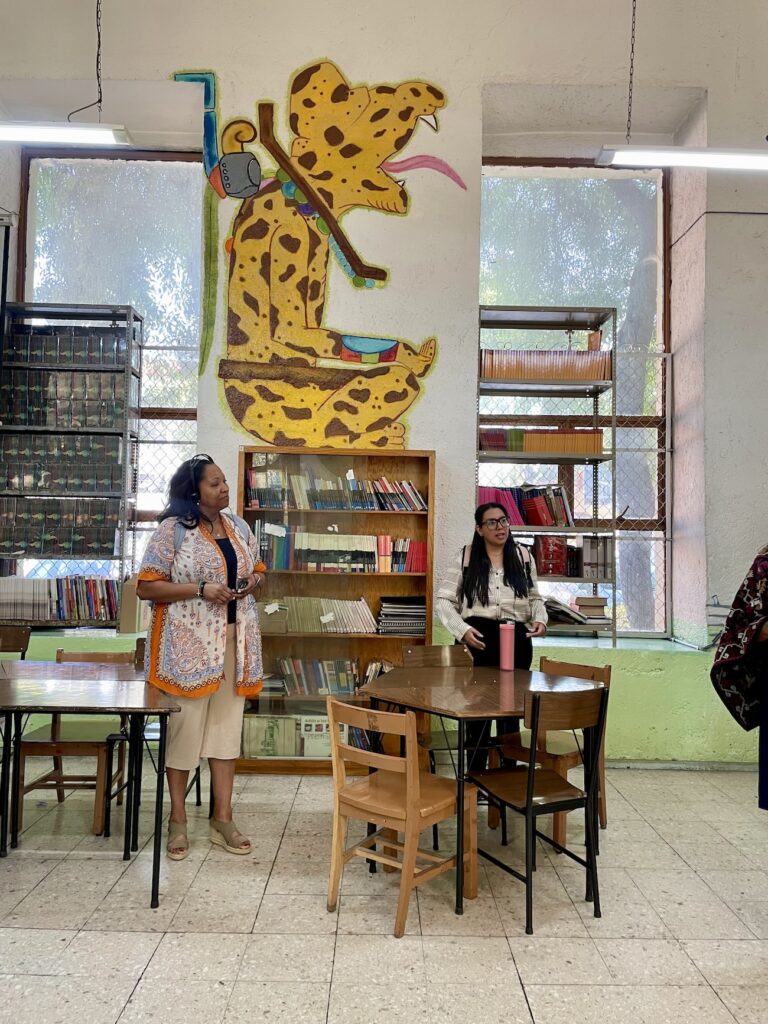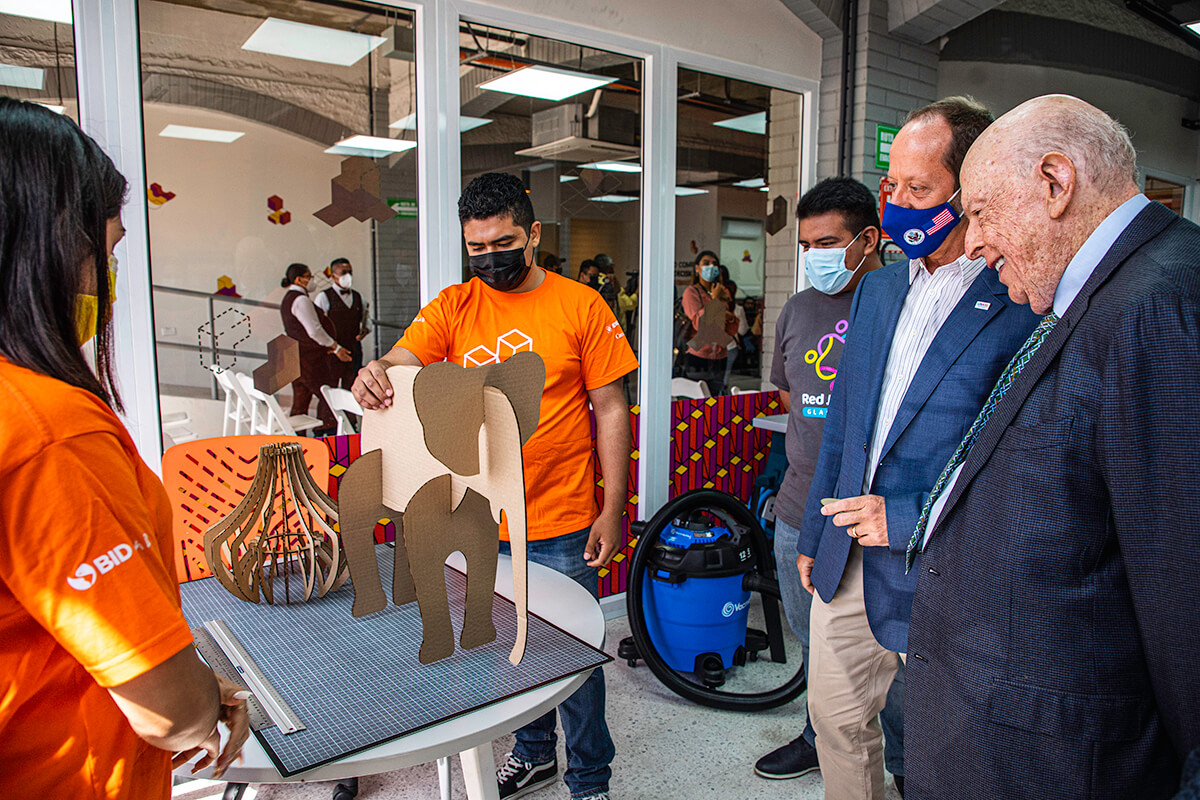Glasswing’s First-Ever Learning Journey: A Front-Row Seat to Resilience and Change
Published on May 8, 2025 by Glasswing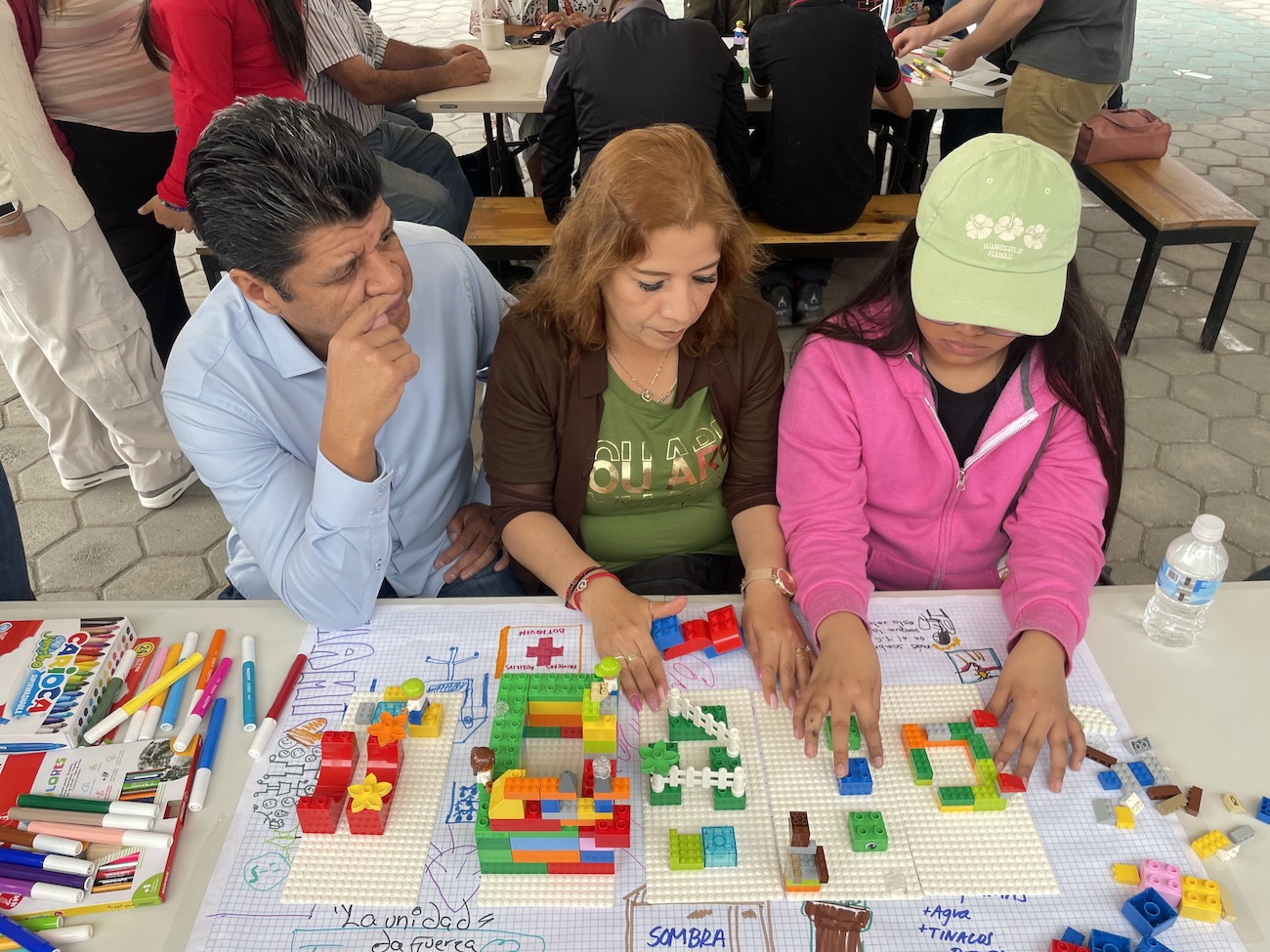
Recently, a group of philanthropists and advocates for education came together for Glasswing’s first-ever “Learning Journey.” The trip took place in Mexico City over the course of three days, with attendees including Glasswing board members, supporters, and partners.
The Mexico Learning Journey wasn’t just about seeing Glasswing’s education and community-development programs in action. It was about feeling their impact. Attendees listened to young people and community members to understand their needs on a personal level. They saw how schools, community centers, and learning spaces serve under-resourced areas—and what we can do to help them.
Visiting a school where students flourish in after-school programs
The first stop was the Moisés Sáenz School in Colonia Santa Maria La Ribera, near Mexico City. The school serves about 750 students in first to sixth grades.
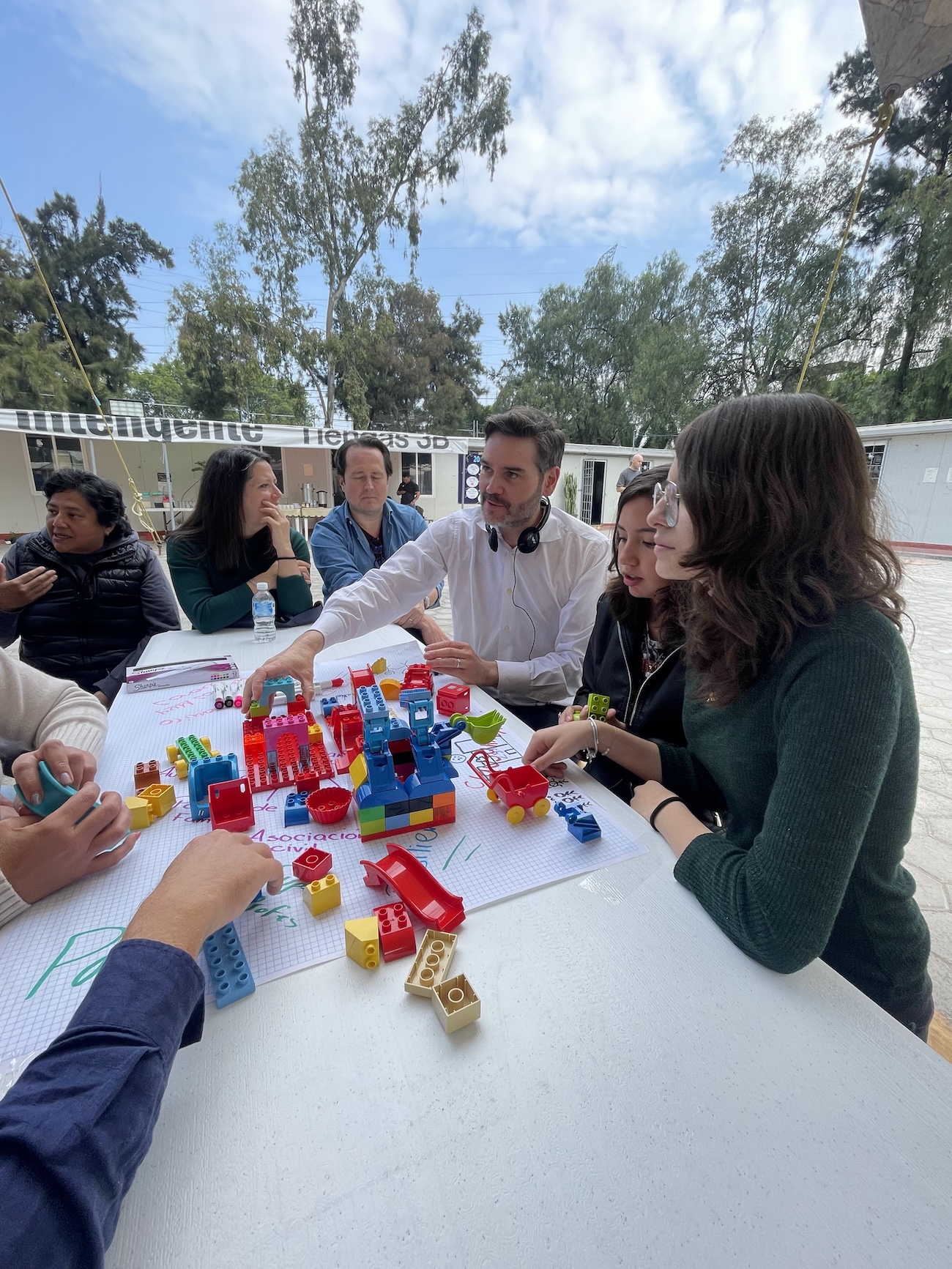
Tyler Reynolds, a New York–based attorney and one of 15 Learning Journey attendees, described the school as “physically beautiful,” though not without its limitations, such as a library with limited equipment.
“These kids deserve so much more,” he said.
Students welcomed visitors with lighthearted “get to know you” games, leading to sweet moments, like when they playfully nicknamed Tyler “Tyler, the Creator,” after the pop artist. These small but meaningful interactions spoke to the power of connection and community.
Learning Journey attendees also had the opportunity to see the school’s Robotics and Soccer Clubs in action. These are two of many Glasswing programs that foster team building, creative thinking, and problem solving.
Both clubs were thriving. Tyler was particularly impressed by the students’ motivation and teamwork. They had traveled on a day off just to participate.
Tyler also had the chance to collaborate with students on a Robotics project. “It was clear that Glasswing’s plan was effective. These kids knew each other’s strengths: a boy was excellent at programming, while a girl took the lead in organizing the team. It was absolutely motivating.”
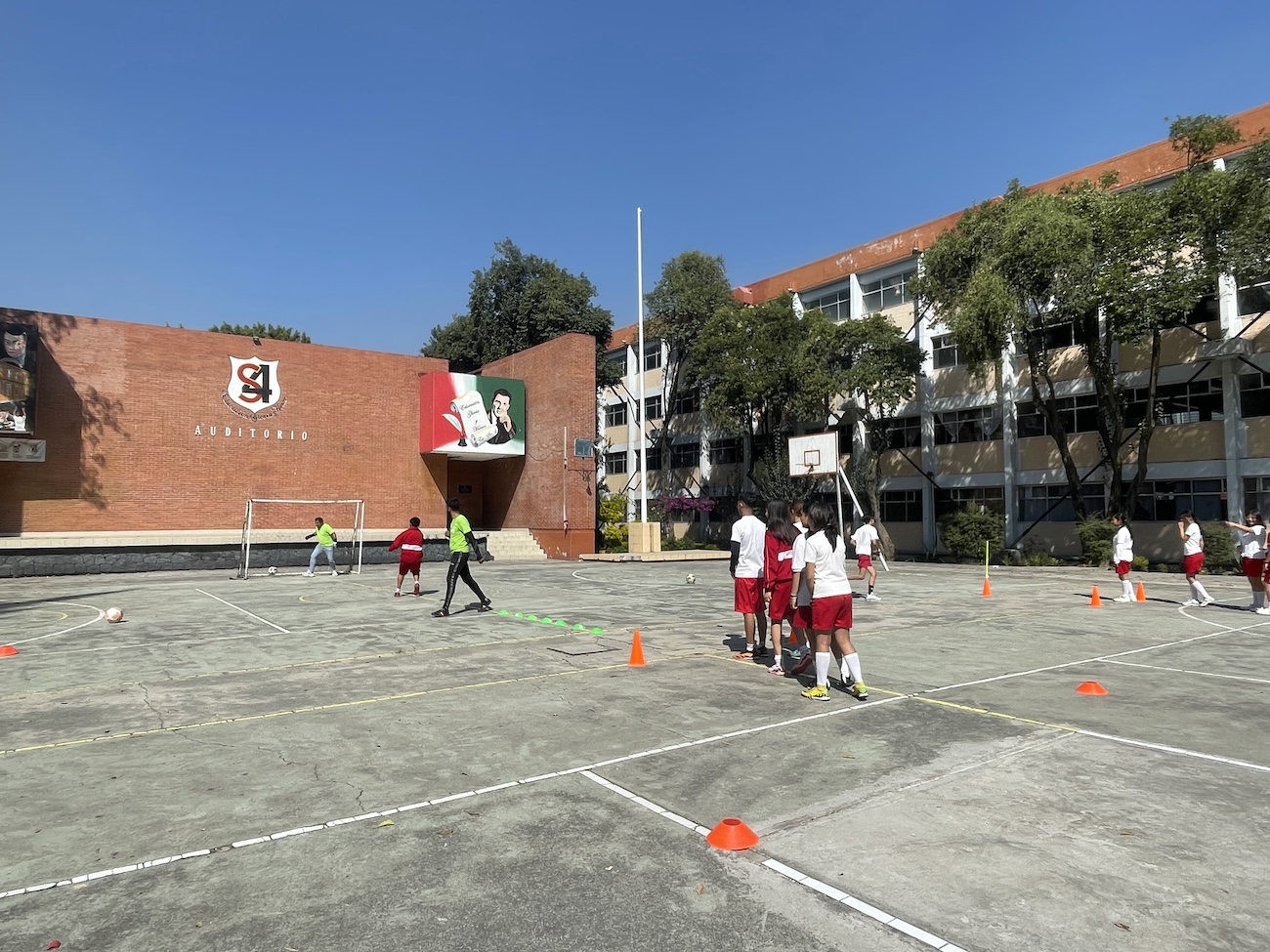
One of the biggest takeaways for both Tyler and another attendee, Boston-based Caroline Hempstead, was how deeply mental health was woven into Glasswing’s programming. The after-school programs included mental health check-ins, providing students with safe spaces to express themselves. The school also incorporates mental health practices into its routine, including meditation at the start and end of after-school programs.
“These aren’t just academic challenges,” Caroline said. “These are personal battles, systemic battles. It’s about the weight these kids carry and how programs like these give them a chance.”
Next stop: CETIS #57
Later that day, the group visited CETIS #57 “Ignacio Allende” in Iztapalapa, a vocational high school with a focus on healthcare professions.
The contrast was stark. The infrastructure was significantly worse, with no library at all. The school had been badly damaged by an earthquake. Basic needs like running water were missing.
Tyler explained how a graduating student told him about the heartbreak she felt regarding the state of the school. Her family had attended the school for generations. She worried that she would never see it fully repaired. Yet she remained hopeful that future students would have better opportunities.
“It’s not for lack of leadership or dedication that these schools struggle,” Tyler said, noting how dynamic and beloved by students the school’s principal was. “They need our support.” A simple investment in water tanks, he said, could make an immediate difference.
Many kids traveled for hours to get to school, waking up at 5:30 AM and returning home late in the evening. Despite the long days, they remained committed to their education and self-improvement.
“When students are willing to fight through all these barriers,” Tyler said, “the least we can do is invest in their future.”
A seemingly small issue underscored the importance of intervention. At the school, wild animals raided the trash every night, leaving teachers to clean up before lessons could start. The solution? A hundred dollars for lidded trash cans. It would be a simple fix with a huge impact—less time spent cleaning, more time spent teaching.
“Imagine,” Tyler said. “These teachers are already doing so much with so little. If we can solve problems like this, imagine what else we can do.”
Beyond schools
One of the most powerful stops on the journey was a visit to Casa Tochan, a shelter in Mexico City for people on the move.
Unlike the tent encampments many participants expected, Casa Tochan was a converted house. It had been transformed into a safe, dignified facility. The people staying at Casa Tochan were from diverse backgrounds, including Russian, Turkish, Haitian, and many Latin American countries.
On a whiteboard were phrases like, “How are you?” and “I’m looking for work.” They were learning English and preparing for new lives.
Impact locally and at scale
Glasswing staff explained the high youth-unemployment rates in the region, but they also shared something hopeful: how these programs are actively changing outcomes.
They aren’t just filling in educational gaps; they’re creating pathways to jobs, leadership, and a future students could actually see for themselves.
“What stood out to me,” Caroline said, “is how specific the solutions are. They don’t apply some generic model. They listen, they adapt, and that’s why it works.” She noted how the strategy of Glasswing’s programs reflects local needs, ensuring sustainability.
By the end of the journey, one thing was clear: Glasswing’s impact isn’t just about numbers. It’s about adaptability. The model works because it’s not one-size-fits-all. It’s about meeting communities where they are and building something that lasts.
With programs already reaching 250,000 people across 15 countries, the challenge now is scaling and ensuring that these solutions can be adopted by even more communities, that governments and local partners can take them forward.
“If we want to support a nonprofit, we need to see that the program is accepted by the government,” Tyler said. “Glasswing has done this well. Its programs are now standard training for law enforcement in some countries. This proves they work and deserve support.”
Final reflections
In just a few days, participants gained an incredible depth of knowledge. The well-curated itinerary ensured there was no wasted time, allowing busy professionals to engage meaningfully.
Tyler emphasized how “seeing it in action changes everything. You realize how vital these programs are.”
“The difference between hearing about these programs and seeing them in person is massive,” he said. “When you see the impact, you feel it deeply.”
The Mexico Learning Journey was about committing to real, lasting change. “When we invest in these students, we invest in all of us,” Caroline said.
Join us
Ready to be part of the change? To learn more about Glasswing Learning Journeys—including how to participate in the next one—please email Bridget Kane, Glasswing’s Director of Engagement: [email protected].
